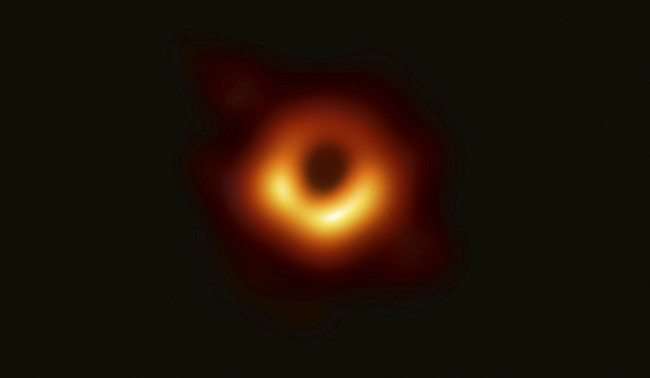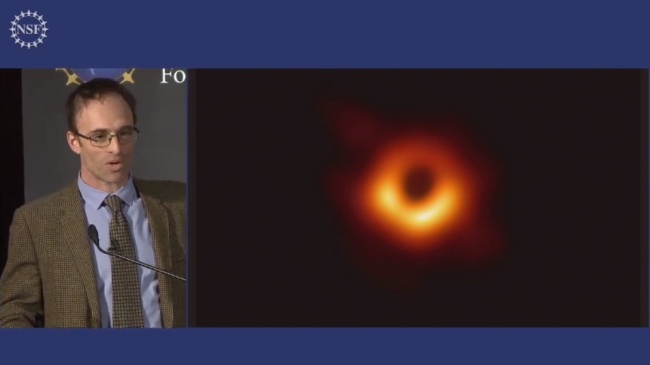Paris (AFP) -- Astronomers on Wednesday unveiled the first photo of a black hole, one of the star-devouring monsters scattered throughout the Universe and obscured by impenetrable shields of gravity.
The image of a dark core encircled by a flame-orange halo of white-hot gas and plasma looks like any number of artists' renderings over the last 30 years.
But this time, it's the real deal.
 |
This image released Wednesday by Event Horizon Telescope shows a black hole. (Event Horizon Telescope Collaboration/Maunakea Observatories) |
Scientists have been puzzling over invisible "dark stars" since the 18th century, but never has one been spied by a telescope, much less photographed.
The supermassive black hole now immortalised by a far-flung network of radio telescopes is 50 million lightyears away in a galaxy known as M87.
"It's a distance that we could have barely imagined," Frederic Gueth, an astronomer at France's National Centre for Scientific Research (CNRS) and co-author of studies detailing the findings, told AFP.
 |
The US-based Event Horizon Telescope presents its first real image of a black hole in a simultaneous global press conference, starting at 13:00 UTC Wednesday. (Captured from the livestreaming at National Science Foundation's official YouTube channel) |
Most speculation had centred on the other candidate targeted by the Event Horizon Telescope -- Sagittarius A*, the black hole at the centre of our own galaxy, the Milky Way.
By comparison, Sag A* is only 26,000 lightyears from Earth.
Locking down an image of M87's supermassive black hole at such distance is comparable to photographing a pebble on the Moon.









![[Weekender] Korea's traditional sauce culture gains global recognition](http://res.heraldm.com/phpwas/restmb_idxmake.php?idx=644&simg=/content/image/2024/11/21/20241121050153_0.jpg)